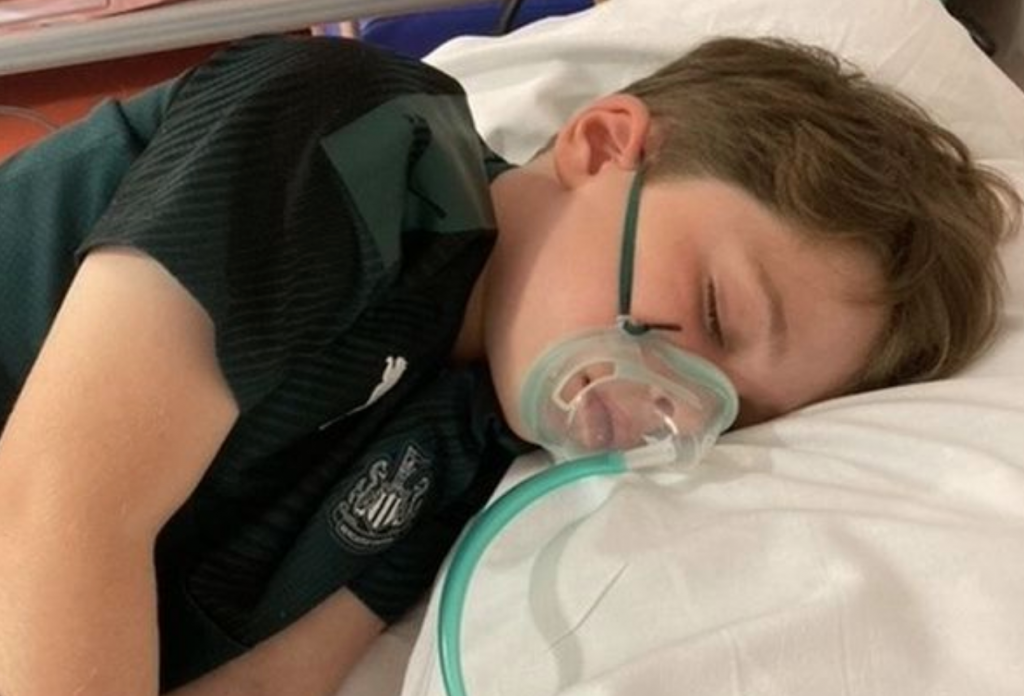A Young Boy's Remarkable Resilience
- 6-year-old Seb Boulter is now cancer-free after an astounding 2,244 medical procedures since his cancer diagnosis at age 3.
- The incredible fighter began chemotherapy at 4 years old for T-lymphoblastic lymphoma, which is a rare form of an aggressive non-Hodgkin lymphoma.
- According to the American Cancer Society, the main difference between lymphocytic leukemias and lymphomas is that in leukemia, the cancer cells are mainly in the bone marrow and blood, while in lymphoma they tend to be in lymph nodes and other tissues.
- Seb’s symptoms included a severe cough, a sudden lack of appetite, and a visible vein from his neck to his groin.
"It's the words that no parents want to hear, 'your child has cancer,'” Seb’s mom, Claire Boulter from Hertfordshire, England told HertsLive. “It was a huge shock and very distressing to see our active little boy go into that world."
Read More “The chemotherapy was so brutal and could possibly have long term effects, but we are grateful that any treatment existed at all for his type of cancer.”
“The chemotherapy was so brutal and could possibly have long term effects, but we are grateful that any treatment existed at all for his type of cancer.”For some types of rare cancers, there are not as many options treatment-wise, so Seb is quite lucky indeed.
The family, which also includes Claire’s husband, James, and their youngest child, daughter Beatrice, started collecting “beads of courage” in honor of the little warrior’s highly intense fight, thus racking up over 2,200!
Related: Warning Signs! The Top Ten Childhood Cancer Symptoms That Can Be Missed
Seb, who finished his treatment on June 24, is overjoyed to be doing normal kid things again. "He is such a determined little boy already and we can't wait to see what happens when he's not on chemo.”

We wish Seb a long, full life and a smooth transition getting back to what’s most important: being a kid!
Understanding Seb’s Rare Lymphoma
According to the American Cancer Society, the main difference between lymphocytic leukemias and lymphomas is that in leukemia, the cancer cells are mainly in the bone marrow and blood, while in lymphoma they tend to be in lymph nodes and other tissues.
In the case of T-lymphoblastic lymphoma/leukemia, this cancer can either be considered a lymphoma or a type of acute lymphoblastic leukemia, or ALL, depending on how much of the bone marrow is involved. (This is a rare cancer; it accounts for about 1% of all lymphomas, according to ACS. It is most common in teens or young adults, with males being affected more often than females.)
What Kind of Lymphoma Do You Have? Why Your Type Matters
In the case of lymphoma, SurvivorNet expert Dr. Elise Chong, medical oncologist at Penn Medicine, says she always advises that "people understand their specific type of lymphoma, because there are over 40 different types."
"One of the best ways to wrap your head around lymphoma is to start thinking about the different ways we categorize lymphoma," she says, adding that the first differentiator is whether you have Hodgkin or non-Hodgkin lymphoma. Seb, as we noted, had non-Hodgkin.
Related: Non-Hodgkin Lymphoma: Can Radiation Scans Cause Cancer?
Hodgkin lymphoma has distinctive, giant cells called Reed-Sternberg cells. The presence of these cells, which can be seen under a microscope, will help your doctor determine which of the two lymphoma types you have. There are a few other important differences to note, the main one being that non-Hodgkin lymphoma is much more common.
The next question your doctor will want to answer is whether your cancer is affecting your B-cells or T-cells (like Seb’s type of cancer. That answer is important because it will help to determine which treatment you get.
Do You Know Your B Cells From Your T Cells?
Most non-Hodgkin lymphomas about 85% affect B-cells. However, T-cell lymphomas are much more rare; these cancers make up just 15% of non-Hodgkin lymphomas. Unlike B-cells, T-cells directly destroy bacteria and other invaders. Rare cancer T-lymphoblastic lymphoma/leukemia is a type of T-cell lymphoma cancer (as long as there is not much bone marrow involvement, then the cancer would be considered a type of ALL.)
T-cell lymphoma cancer often starts in the thymus (a small organ behind the breastbone and in front of the heart, which is where many T cells are made), and can grow into a large tumor in the mediastinum (the area between the lungs), according to ACS.
The chance of curing this type of cancer with chemotherapy is "quite good," according to ACS. Often, the lymphoma form of this disease is treated in the same way as the leukemia form.
Contributing by SurvivorNet staff.
Learn more about SurvivorNet's rigorous medical review process.

